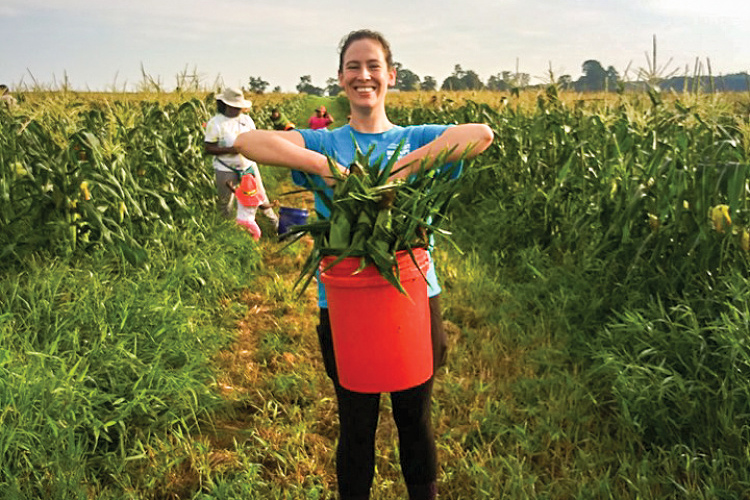Home > Farm > Farm to Table > How North Carolina Organizations Are Reducing Food Waste
How North Carolina Organizations Are Reducing Food Waste
In partnership with: North Carolina Department of Agriculture & Consumer Services

Many of us take our access to healthy food for granted, throwing away perishables before they’re expired or picking only the most perfect produce. In 2015, the U.S. Environmental Protection Agency reported that Americans generated nearly 40 million tons of food waste. That year, 76% of that food ended up in landfills. Three organizations in North Carolina are using creative thinking to help reduce food waste across their state and feed the state’s food-insecure citizens.
Providing More Than Food
In 1989, co-founders of the Inter-Faith Food Shuttle, Jill Staton Bullard and Maxine Solomon, noticed that fast-food breakfast sandwiches were being thrown away simply because the clock had moved from breakfast time to lunchtime. They knew that perfectly good food shouldn’t be wasted. That day they delivered 11 sandwiches to a local food shelter.
Today, the Inter-Faith Food Shuttle redistributes 5.5 million pounds of healthy food that would otherwise be thrown away to 100 partnering agencies. Almost 35% of the distributed food is fresh produce that comes from retail food donations, the Food Shuttle Farm, volunteer food drives and field gleaning.

See more: 5 Ways to Realistically Reduce Your Food Waste
“Emergency food provision is not enough to end hunger. In addition to food, people need nourishment, economic access and job skills. Culinary classes, mobile markets, nutrition education and community gardens all sprang from this understanding,” says Laura Rice, communications and media manager for Inter-Faith Food Shuttle.
“We’re not just about putting food on a plate. We believe that the solutions to hunger are found in building a community food system that supports all of its residents with knowledge, skills and access to healthy eating,” Rice explains.
Gleaning the Way
The Society of St. Andrew operates in 10 states to help salvage food left in farmers’ fields after they complete harvest. They distribute that food to local feeding agencies to offer fresh produce to the food insecure. In North Carolina alone, volunteers with the Society of St. Andrew gleaned 5.6 million pounds of produce in 2018.

Regional Director Michael Binger says mid-June through Thanksgiving is the busiest time of year for the organization, which works directly with farmers to organize gleaning activities. Volunteers coordinate to gather produce including corn, strawberries, tomatoes, squash, cucumbers and potatoes, among others from fields postharvest. The gleaned produce often doesn’t have the right aesthetic for farmers to sell at market but is still perfectly healthy for consumption.
“We at the Society of St. Andrew realize that there’s plenty of food out there to feed everyone. We want to be a part of getting the food that’s falling through the cracks to the people that need it,” Binger says.
See more: 10 Ways to Reduce Waste in the Kitchen

Thinking Outside the Box to Reduce Food Waste
After 40 years of farming sweet potatoes, the Ham family recognized they were generating plenty of food waste. “We could not stop thinking there had to be an answer to this problem,” Stacy Ham Thomas of Ham Farms explains.
That notion led Ham Farms to build Natural Blend Vegetable Dehydration (NBVD) in 2014. The kosher and ASI-certified facility enables them to use 100% of the sweet potatoes they grow. Leftover sweet potatoes are dehydrated into pellets, cubes and pet chews for the pet food industry. While NBVD specializes in sweet potatoes, it has the capacity to dehydrate most any fruit or vegetable. “Natural Blend Vegetable Dehydration saves millions of pounds of vegetables per year. We custom-dry a range of vegetables, not just sweet potatoes. We want to be a resource for the industry, and we are always trying new items,” Ham Thomas says.
As the market has grown, the Ham family has even begun to purchase leftover produce from other growers to help reduce on-farm waste. “As the population continues to grow, and the demands continue to change, we have to be thinking outside of the box,” Ham Thomas says.
See more: North Carolina is Home to a Variety of Nutrient-Packed Superfoods



